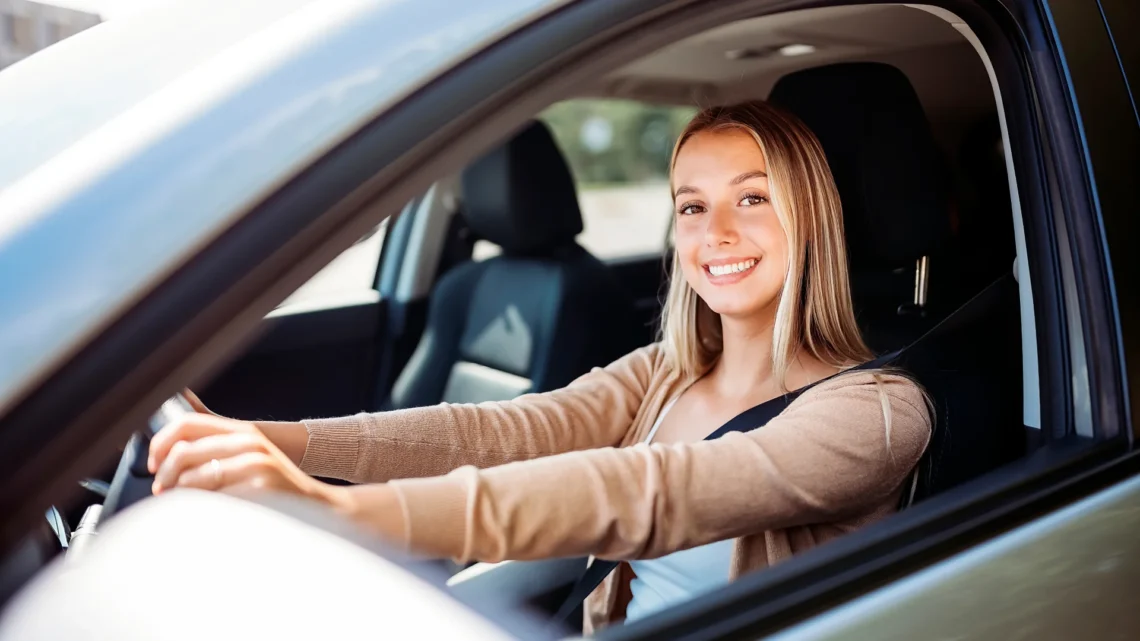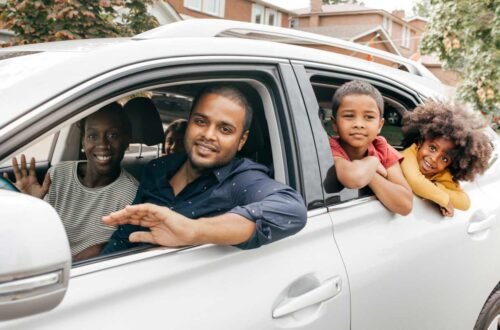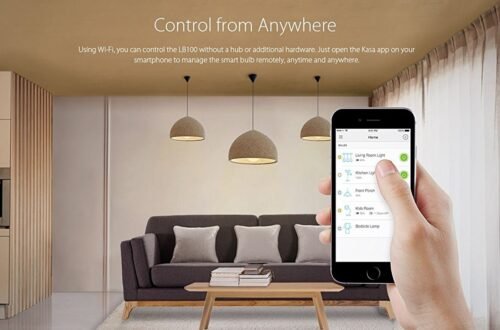Introduction: Navigating the Road Without a Car in Your Name
In a world increasingly defined by flexible lifestyles, urban living, and shared economies, car ownership is no longer the universal given it once was. Many people find themselves frequently behind the wheel of a car they do not own. Whether you’re a city dweller who relies on rental cars for weekend getaways, a frequent business traveler who rents vehicles at your destination, or someone who regularly borrows a friend’s or family member’s car, you face a critical question: are you adequately insured? The answer to this question lies in a specialized, and often misunderstood, type of policy known as non-owner car insurance. This definitive guide will provide a deep and thorough exploration of non-owner car insurance, demystifying its purpose, its mechanics, and its profound importance for the modern occasional driver. Our journey through the intricacies of non-owner car insurance will cover everything from its fundamental definition to the nuanced scenarios where it becomes not just a smart choice, but an essential one.
Many drivers operate under a dangerous misconception: that the car owner’s insurance policy will automatically provide full and complete coverage for them in the event of an accident. While this is partially true, the coverage is often secondary, limited, and fraught with potential financial pitfalls. Without a proper non-owner car insurance policy, an at-fault accident in a borrowed or rented vehicle could leave you personally liable for tens of thousands of dollars in damages, not to mention vulnerable to lawsuits. This article is designed to be your ultimate resource. We will dissect the layers of coverage, compare it to other insurance types, guide you through the purchasing process, and illuminate the specific demographics that can benefit most from this crucial financial safeguard. Understanding non-owner car insurance is the first step toward responsible driving in a non-ownership world.
Chapter 1: The Fundamentals – What Exactly Is Non-Owner Car Insurance?
1.1 Defining the Policy
At its core, non-owner car insurance is a liability insurance policy designed for individuals who do not own a vehicle but still drive occasionally. It is sometimes referred to as “non-owners SR-22” in high-risk cases, but its utility extends far beyond that specific circumstance. It’s crucial to understand what this policy is not: it is not a substitute for standard auto insurance, and it does not provide physical damage coverage for a vehicle you drive. Instead, it acts as a protective shield for you, the driver.
A non-owner car insurance policy primarily provides:
- Bodily Injury Liability (BIL): This covers the medical expenses, lost wages, and pain and suffering of other people injured in an accident where you are at fault.
- Property Damage Liability (PDL): This covers the cost of repairing or replacing other people’s property that you damage in an at-fault accident. This most commonly means other vehicles, but can also include fences, buildings, lampposts, etc.
Think of it as a portable policy that follows you, not a specific car. When you get behind the wheel of a car you don’t own, this policy serves as your primary or secondary layer of liability protection, depending on the circumstances and the car owner’s policy limits.
1.2 How It Differs from Standard Auto Insurance
A standard auto insurance policy is a package that includes several types of coverage tied to a specific vehicle (or vehicles) that you own. This package typically includes:
- Liability Coverage (BIL and PDL)
- Collision Coverage (for damage to your car from an accident)
- Comprehensive Coverage (for damage to your car from non-collision events like theft, fire, or hail)
- Medical Payments/Personal Injury Protection (PIP)
- Uninsured/Underinsured Motorist Coverage
Non-owner car insurance, in stark contrast, is a much narrower policy. It is almost exclusively a liability-only product. It does not include:
- Collision or Comprehensive Coverage: It will not pay to fix the car you are driving if you crash it. That is the responsibility of the car owner’s insurance policy (specifically, their collision coverage) or, if they lack it, you personally.
- Coverage for a Vehicle You Own: If you purchase a non-owner car insurance policy and then buy a car, the policy will not cover that vehicle. You must convert it to a standard owner’s policy.
The key distinction is attachment: a standard policy attaches to a car, while a non-owner car insurance policy attaches to a person.
Chapter 2: The Critical Need – Who Absolutely Requires Non-Owner Car Insurance?
The demographic for non-owner car insurance is broader than most people realize. It is not a niche product but a vital one for a growing segment of the population.
2.1 The Urban Dweller and Frequent Rental User
City residents often forgo the expense and hassle of car ownership thanks to robust public transportation, ride-sharing, and walking. However, there are times when a car is necessary—a trip to IKEA, a weekend in the countryside, or a holiday visit to family. Renting a car is the obvious solution. While rental companies offer their own insurance (often called a Loss Damage Waiver or LDW), it is notoriously expensive and often duplicates coverage you might already have through a credit card. More importantly, the rental company’s liability coverage is often minimal. A non-owner car insurance policy provides a consistent, personal layer of liability protection every time you rent, often at a fraction of the daily cost of the rental company’s offering.
2.2 The Driver with a Suspended License Requiring an SR-22
In many states, drivers who have had their license suspended due to serious violations (like a DUI/DWI, reckless driving, or accumulating too many points) are required to file an SR-22 form—a certificate of financial responsibility—with the DMV to get their license reinstated. The state needs proof that you carry the legally mandated minimum insurance. If you don’t own a car, you cannot get a standard policy to file an SR-22. This is where an SR-22 non-owner car insurance policy becomes mandatory. It satisfies the state’s requirement and allows you to legally regain your driving privileges, even if you only plan to drive borrowed or rented vehicles.
2.3 The Frequent Borrower of Vehicles
Perhaps you live with a partner or roommate who owns a car, and you drive it once or twice a week. Maybe you often borrow your parent’s car when you visit. While the owner’s policy is primary, its limits may be low. If you cause a severe accident where damages exceed those limits, you could be sued for the difference. Your own non-owner car insurance policy would act as a secondary layer, kicking in after the owner’s policy is exhausted, protecting your personal assets from a lawsuit.
2.4 The Business Traveler
Employees who travel frequently for work may be asked to rent a car upon arrival. While the company’s business insurance policy might provide some coverage, it can be complex and may have gaps, especially if you use the rental car for personal errands after business hours. A personal non-owner car insurance policy ensures you are never caught in a bureaucratic gap between personal and corporate coverage.
2.5 The Car-Sharing Service User
Services like Turo (the “Airbnb for cars”) are exploding in popularity. While Turo provides its own insurance, the coverage levels can vary depending on the protection plan chosen by the car owner or the renter. Having your own non-owner car insurance policy can fill in liability gaps and provide peace of mind when driving a stranger’s vehicle.
2.6 The Household Member with a High-Risk Driver
Sometimes, a family member with a terrible driving record living in your household can cause your premiums to skyrocket, even if they don’t drive your car. Some insurance companies may even refuse to insure your vehicle. In such cases, excluding that driver from your policy and having them purchase a non-owner car insurance policy can be a solution. It protects them (minimally) when they drive other cars and protects your own insurance rates.
Chapter 3: The Mechanics of Coverage – What Does It Really Protect?
Understanding the scope and, just as importantly, the limitations of a non-owner car insurance policy is critical to making an informed decision.
3.1 Core Coverage Components
- Liability Protection: This is the cornerstone. As outlined, it covers injuries to others and damage to their property. States have minimum requirements (e.g., 25/50/25 in many states, meaning $25,000 per person for bodily injury, $50,000 per accident, and $25,000 for property damage). However, it is highly advisable to purchase limits that reflect modern medical and repair costs—often $100,000/$300,000/$100,000 or higher.
- Uninsured/Underinsured Motorist (UM/UIM): This is often an optional but highly recommended add-on. If you are hit by a driver who has no insurance or not enough insurance to cover your medical bills, your UM/UIM coverage will step in. Since you don’t have a car with its own policy to provide this, adding it to your non-owner car insurance is your only way to get this protection.
- Medical Payments (MedPay) or Personal Injury Protection (PIP): This too is often optional and varies by state. It can help pay for your medical expenses resulting from an accident, regardless of who is at fault.
3.2 Explicit Exclusions and Limitations
A non-owner car insurance policy will not cover:
- Vehicles You Own: If you have regular access to a vehicle owned by someone in your household, the insurance company will likely expect that vehicle to be listed on a standard policy. You cannot use a non-owner policy to insure a household vehicle on the cheap.
- Rental Car Damage (Physical Damage): It will not pay for the dent in the fender of your rental car. That is what the rental company’s Collision Damage Waiver (CDW) or your credit card’s rental insurance is for (though you must understand your credit card’s terms perfectly).
- Borrowed Car Damage (Physical Damage): It will not pay to fix your friend’s car if you crash it. That would fall to your friend’s collision insurance, if they have it. If they don’t, you would be personally responsible.
- Commercial Use: Most policies exclude using a vehicle for business purposes like delivery (e.g., DoorDash, Uber Eats) or ride-sharing. For those activities, you need commercial ride-share insurance.
- Regular Use of a Specific Vehicle: If you borrow the same car from your neighbor every single day, the insurance company may deem this “regular use” and could deny a claim, arguing you should have been listed as a driver on the owner’s policy.
Chapter 4: The Financials – Cost, Pricing Factors, and How to Buy
4.1 How Much Does Non-Owner Car Insurance Cost?
One of the biggest advantages of non-owner car insurance is its relatively low cost. Because you are not insuring a specific, high-value asset (the car itself) and are statistically likely to drive less frequently, premiums are significantly lower than for a standard policy—often 20-50% less. You might pay anywhere from $200 to $800 per year, depending on a multitude of factors, compared to $1,200+ for a standard policy.
4.2 Factors That Influence Your Premium
Insurance companies assess risk. For a non-owner car insurance policy, they consider:
- Driving Record: This is paramount. A clean record with no accidents or tickets will get you the lowest rates. A history of violations, especially major ones like DUIs, will drastically increase your premium, as you are deemed a high-risk driver.
- Location: Insurance costs more in densely populated urban areas with higher rates of accidents and theft compared to rural areas.
- Coverage Limits: The higher the liability limits you choose, the more you will pay. However, the increase for going from state minimums to robust $300,000 limits is often surprisingly small and offers exponentially better protection.
- Age and Gender: Younger, less experienced drivers pay more. Statistically, young male drivers also pay higher premiums.
- Credit History: In most states, insurers use credit-based insurance scores to predict risk. A higher credit score can lead to a lower premium.
- Frequency of Driving: The application will ask how often you expect to drive. Driving every day will cost more than driving a few times a month.
4.3 The Step-by-Step Purchasing Process
- Shop Around: Not all major insurers offer non-owner car insurance. Companies like GEICO, State Farm, and Progressive typically do, but it’s often considered a “specialty” product. You may need to call an agent directly rather than rely on online quotes.
- Gather Information: Have your driver’s license number and details about your driving history ready.
- Get Quotes: Be prepared to specify how often you drive and what for (e.g., “rental cars 4 times a year,” “borrow a car weekly”).
- Choose Your Limits: Do not default to state minimums. seriously consider higher liability limits and adding UM/UIM coverage. The small additional annual cost is worth the immense financial protection.
- Finalize the Policy: Once you purchase, you will receive a proof of insurance card (often called an “insurance ID card”) for your wallet and, if needed, the insurer will file an SR-22 form with your state on your behalf.
Chapter 5: Scenarios and Case Studies – Seeing the Policy in Action
Theory is useful, but real-world examples best illustrate the value of non-owner car insurance.
Scenario 1: The Underinsured Rental Accident
- Driver: Sarah, a New York City resident with no car.
- Situation: She rents a car for a weekend trip to Vermont. She declines the rental company’s extra liability insurance, relying on her credit card’s CDW for the rental car’s damage.
- Accident: Sarah causes an accident, colliding with another vehicle. The driver of the other car suffers a broken arm and whiplash, with medical bills totaling $40,000. Their car is totaled, worth $25,000.
- Without Non-Owner Policy: The rental company provides only the state minimum liability insurance, which is $25,000/$50,000/$10,000 in New York. The policy would pay $25,000 for the injured driver’s bills (the per-person limit) and $10,000 for the car (hitting the property damage limit). This leaves $15,000 in medical bills and $15,000 in vehicle damage unpaid. Sarah would be personally sued for this $30,000 shortage.
- With Non-Owner Policy: Sarah has a non-owner car insurance policy with limits of 100/300/100. After the rental company’s minimal policy is exhausted, her policy kicks in. It covers the remaining $15,000 in medical bills and the $15,000 for the vehicle, protecting her life savings from a lawsuit.
Scenario 2: The Borrowed Car Fender Bender
- Driver: Mark, who lives with his girlfriend, who owns a car. He is not on her policy.
- Situation: Mark borrows his girlfriend’s car to run to the store.
- Accident: He rear-ends a very expensive luxury car at a stoplight.
- Without Non-Owner Policy: His girlfriend’s insurance is primary. Her property damage liability limit is only the state minimum of $15,000. The damage to the luxury car is $18,000. Her insurance pays its $15,000 limit. The other driver’s insurance company then comes after Mark for the remaining $3,000.
- With Non-Owner Policy: Mark’s non-owner car insurance policy has a $50,000 property damage limit. It acts as secondary coverage, paying the $3,000 balance that his girlfriend’s policy did not cover. Mark pays nothing out of pocket and avoids collections.
Chapter 6: Common Myths and Misconceptions Debunked
- Myth 1: “The car owner’s insurance will always fully cover me.”
- Truth: It will likely be primary, but if the damages exceed the owner’s policy limits, you are on the hook for the difference. Furthermore, if the owner has only liability insurance and you damage their car, you are responsible for repairing it.
- Myth 2: “My credit card provides full insurance for rental cars.”
- Truth: Most credit cards provide secondary coverage for damage to the rental car itself (collision), but they almost never provide any meaningful liability coverage for injuries or damage you cause to others. They are not a substitute for liability insurance.
- Myth 3: “I don’t drive enough to need my own policy.”
- Truth: It only takes one accident to cause financial ruin. The frequency of driving doesn’t negate the severity of risk.
- Myth 4: “Non-owner insurance is only for bad drivers with an SR-22.”
- Truth: While it is crucial for that group, it is an excellent and affordable tool for any responsible occasional driver who wants to ensure they are fully protected.
Conclusion: The Ultimate Tool for Responsible Driving in a Shared World
The landscape of personal transportation is evolving rapidly. The clear line between “driver” and “car owner” is blurring. In this new reality, financial responsibility cannot be an afterthought. Relying on the hope that someone else’s insurance will be enough is a dangerous gamble with your financial future.
A non-owner car insurance policy is the definitive solution for the occasional driver. It is a low-cost, high-value product that provides a critical safety net. It is a policy of responsibility—for yourself, for your assets, and for others on the road. Whether you are a urbanite, a frequent renter, a borrower, or someone working to regain your driving privileges, investing in a non-owner car insurance policy is one of the smartest and most prudent decisions you can make. It transforms you from an uninsured or underinsured risk into a protected, responsible driver, no matter whose car you’re behind the wheel of.
Do not let a simple lack of vehicle ownership lull you into a false sense of security. Contact insurance providers, get quotes, and secure your own portable layer of protection today. The road ahead is unpredictable; ensure you are prepared for every turn.





